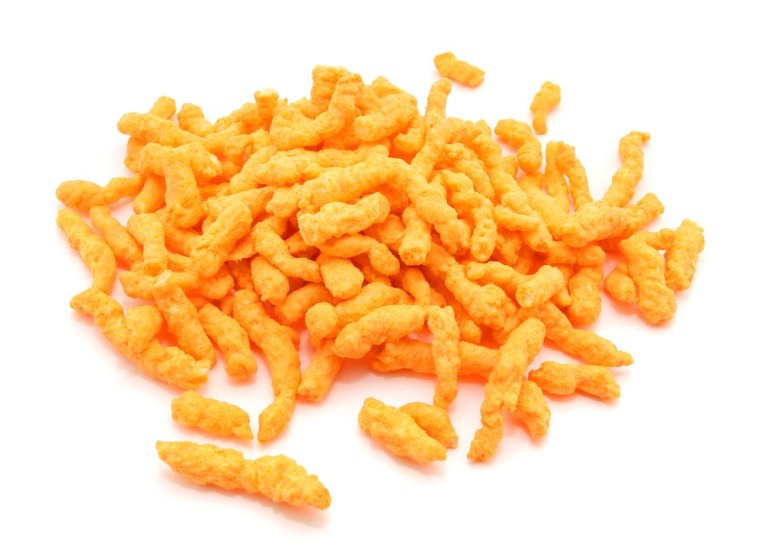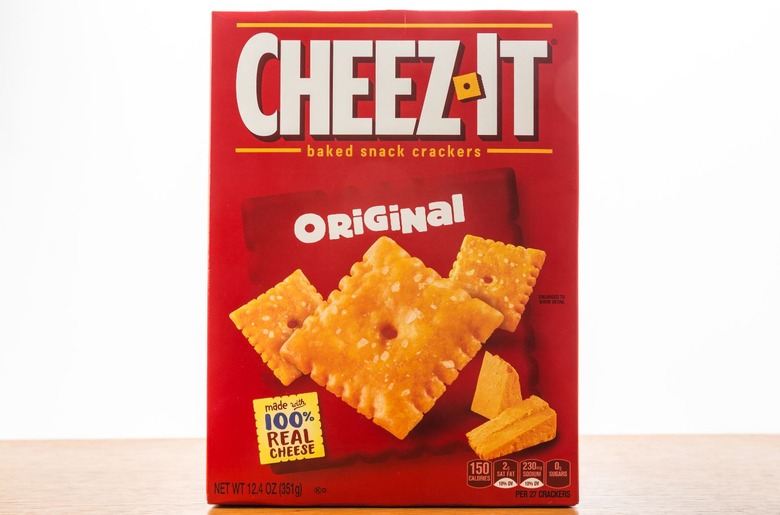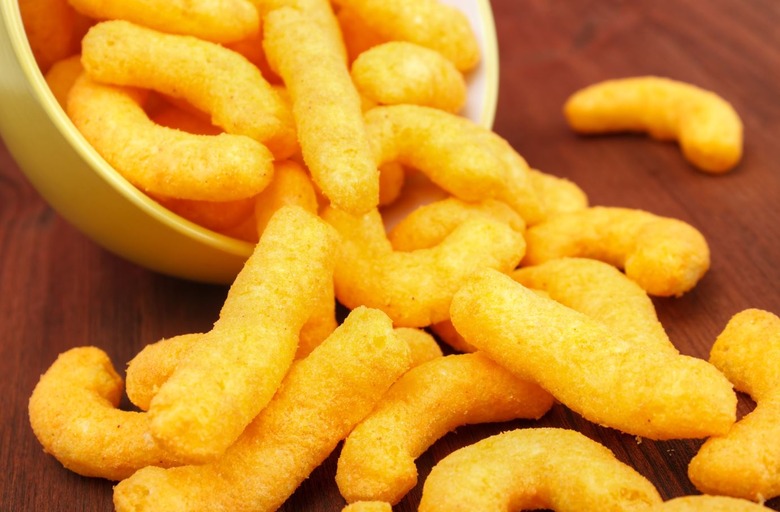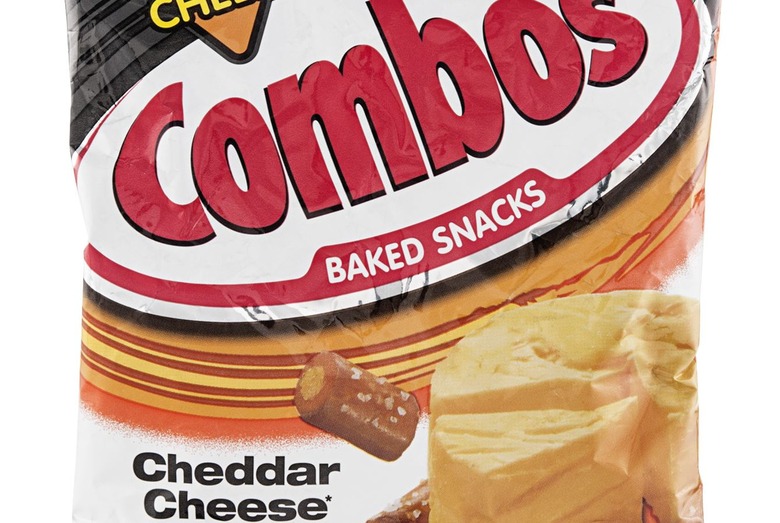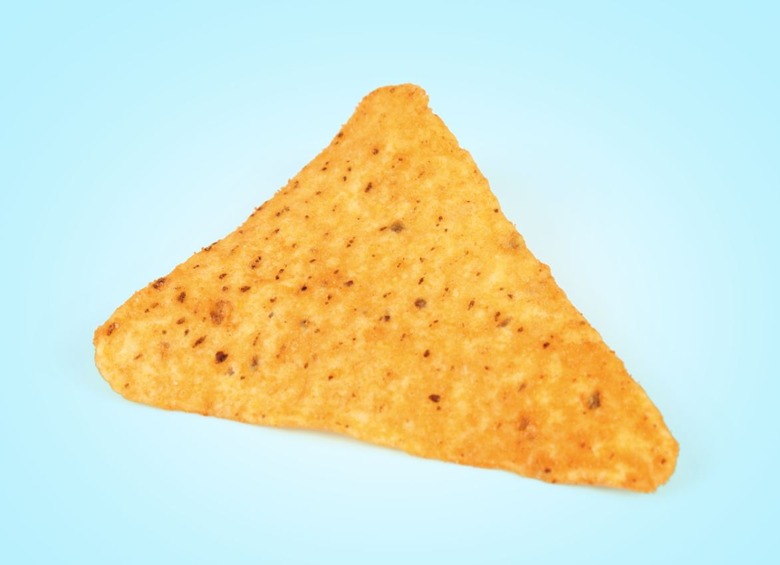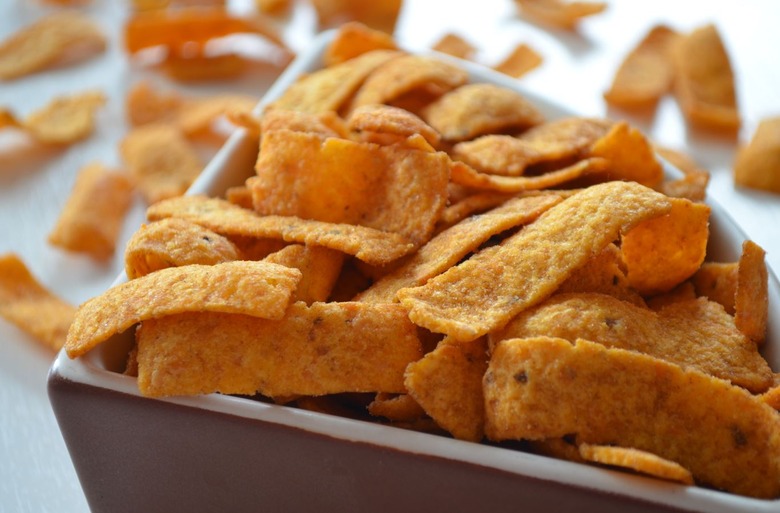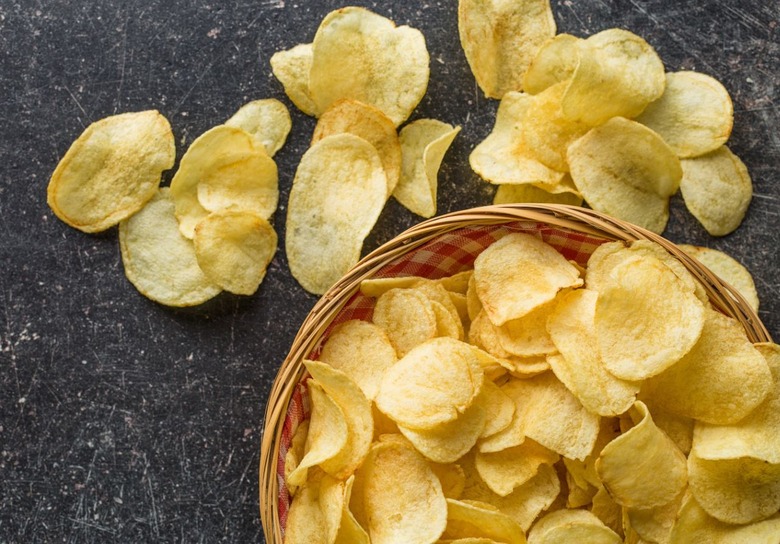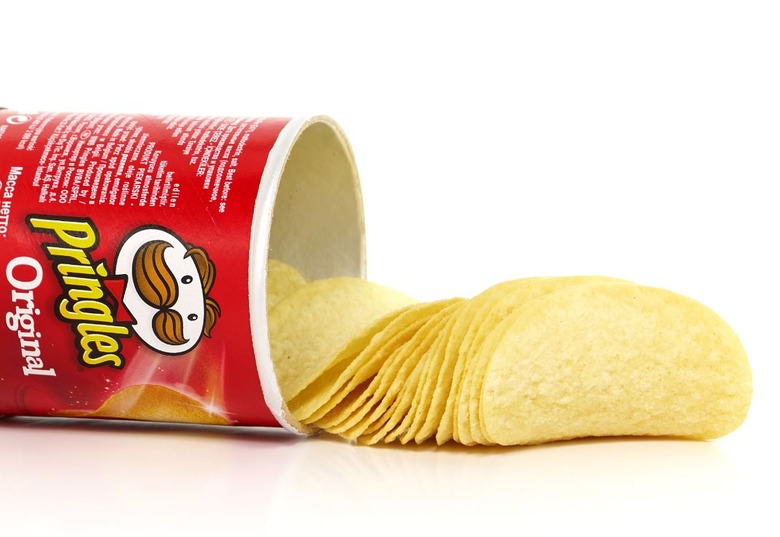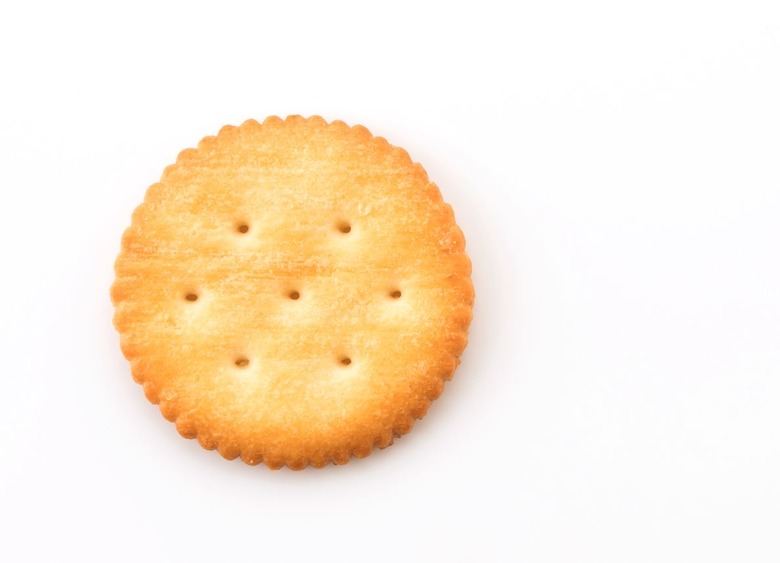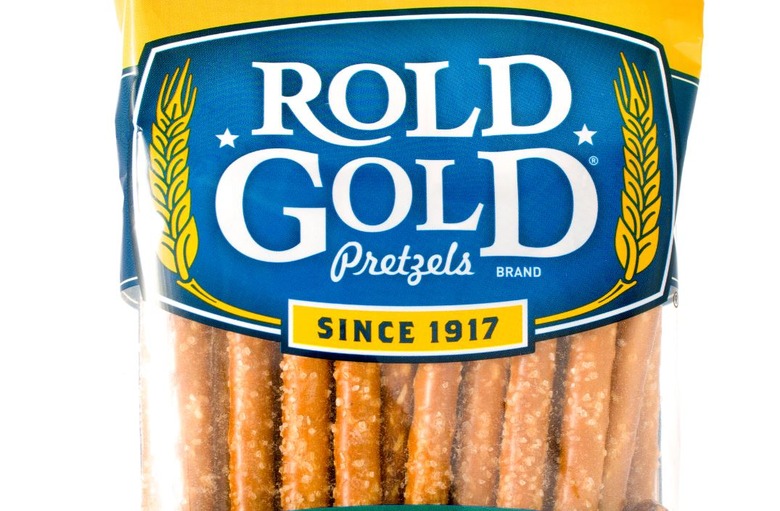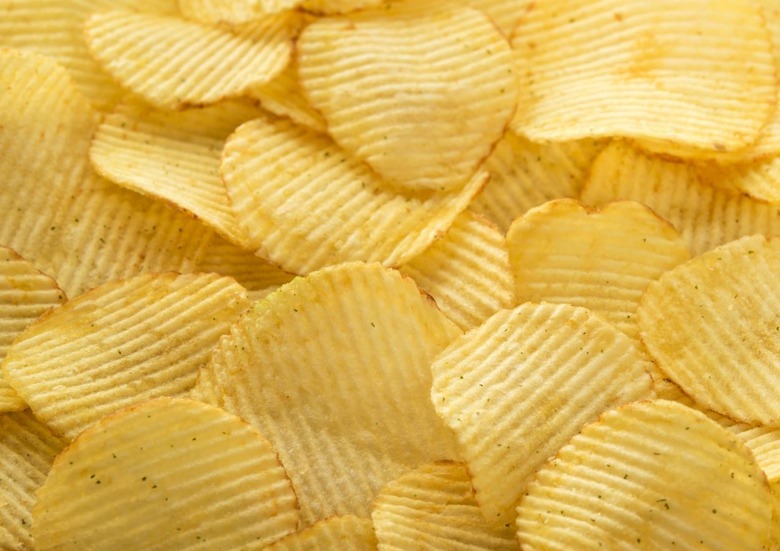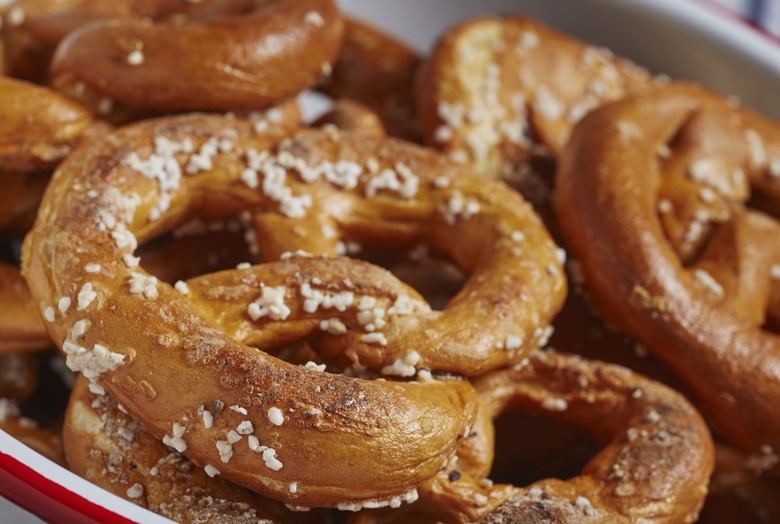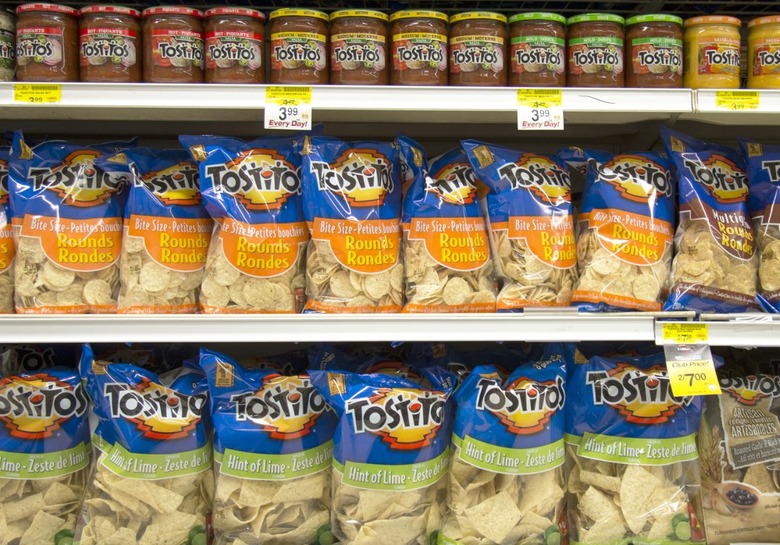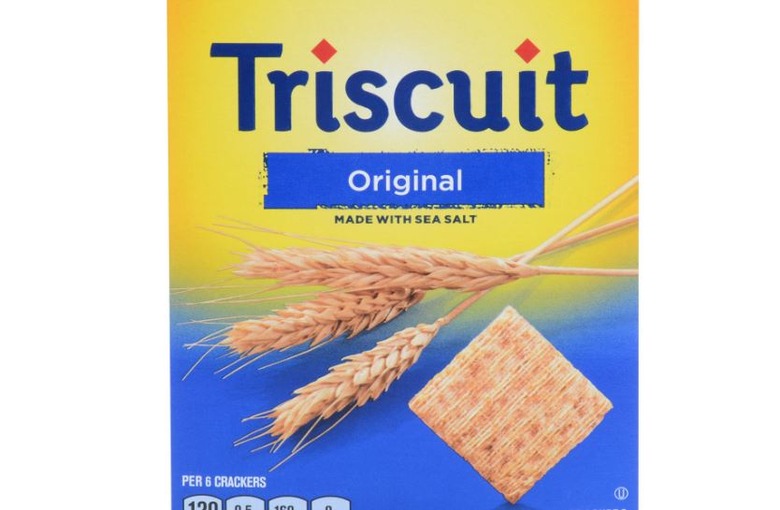Things You Didn't Know About Your 15 Favorite Snack Food Brands
When we're browsing the snack food aisle at our local supermarket, we tend not to give much thought to the stories behind those household-name brands we encounter. But a little bit of curiosity can go a long way, as you'll soon learn: not only do these snacks all have really interesting backstories, we'll bet that there's a lot you didn't know about them in general.
Bugles
Bugles were introduced by General Mills in 1966, but today if you look carefully you'll notice that there are actually two different Bugles manufacturers, General Mills and Tom's. General Mills owned Tom's back in the day, and they continued to license the name and formula to Tom's after they sold it. The primary difference between the two brands these days is the fact that General Mills' Bugles are fried in coconut oil and Tom's are fried in vegetable oil.
Cheetos
Crunchy Cheetos were invented in 1948, and puffy Cheetos were first rolled out in 1971. There are currently more than 20 different varieties of Cheetos in production in America, and they're sold in 36 different countries; in China you can find Savory American Cream Cheetos, and in Japan there's strawberry-flavored Cheetos. The first Cheetos mascot was a mouse; Chester Cheetah didn't come around until 1986.
Cheez-It
Cheez-its debuted in 1921; their original manufacturer was a company called Green & Green but today they're made by Sunshine Biscuits, which is owned by Kellogg. Nabisco, owned by Kraft, released their own version in 1955 called Cheese Nips, and the taste of the two products are nearly identical.
Cheez Doodles
Wise Cheez Doodles, first produced in the 1950s, were invented by Bronx-based King Corp., and for many years were the most popular cheese puff on the East Coast. Just as with Cheetos, crunchy and puffed versions are available, though Cheez Doodles' versions came out a few years after Cheetos' did.
Combos
Combos are made by creating tubes of dough (either pretzel, cracker, or the newer tortilla), cutting them as they go through an extruder, baking them, cooling them, and then inserting the filling. They were actually created by the snack food arm of brewer Anheuser-Busch, called Eagle Snacks, in the 1970s before being taken over by Mars in 1996 when Eagle was dissolved.
Doritos
Doritos were actually invented in Disneyland, at a restaurant owned by Frito-Lay called Casa de Fritos. They were released nationwide in 1966, the very first commercial tortilla chip to hit the American market. Original Doritos were lightly seasoned; taco-flavored Doritos were rolled out in 1968 and the top-selling nacho cheese Doritos were introduced in 1972. Discontinued flavors include sour cream and onion, sesame seed, Jumpin' Jack Monterey Cheese, and a "mystery flavor" that ended up being Mountain Dew.
Fritos
Fritos were invented in 1932 by 29 year-old Charles Elmer Doolin, who went on to invent Cheetos 16 years later. Doolin was obsessed with creating a corn-based snack that wouldn't go stale quickly, and ended up purchasing the recipe from a San Antonio man who had devised a way to extrude corn masa into hot oil. Fritos are very popular in Mexico, the only place where you can find adobado, chile-lime, chorizo-and-chipotle, and salt-and-lime flavored Fritos.
Lay’s
Herman Lay helped put potato chips on the map in the 1930s, when he'd drive around in his Ford Model A delivering chips for the Marrett Food Company, which he was to purchase in 1938 and rename Lay's. Lay's was the first snack food company to purchase television commercials; its celebrity spokesman was Bert Lahr, nowadays best remembered for playing The Wizard of Oz's Cowardly Lion.
Pringles
Pringles were invented through a long trial and error process throughout the 1950s and 60s, developed by Procter and Gamble to address four issues with standard potato chips: they break easily, they're greasy, they go stale, and there's too much air in the bag. Even though the chip and the can were devised in 1958 by a chemist named Fredric Baur, the flavor was lacking until the formula was perfected in 1965 by researcher Alexander Liepa. The machine that cooks Pringles was partially invented by science fiction and fantasy novelist Gene Wolfe (The Book of the New Sun), who was also an industrial engineer. As for their unique shape, that's called a hyperbolic paraboloid.
Ritz Crackers
Ritz Crackers were introduced by Nabisco in 1934 and are still produced by them today. They were called "Ritz" because the term had come to mean something fancy, thanks to the efforts of the Swiss-born luxury hotelier César Ritz. The crackers are the primary component of one of the most notorious Depression-era desserts, mock apple pie, whose recipe is still on the back of boxes. It's essentially the same as apple pie, except the apples are replaced by Ritz crackers. Somehow, it's actually pretty good.
Rold Gold
Rold Gold pretzels were first invented in 1917 and spent the next 50 years owned by the family of the company's founder, L.J. Schumaker. The company was sold to Frito-Lay in 1961, but kept its original name.
Ruffles
The famous ridges in Ruffles chips make the chips, sturdier, crunchier, and better for scooping up dip. Ruffles were invented in the 1950s and got their name from a strip of fabric used as trimming on clothing that's gathered and pleated to give it a wavy look.
Snyder’s of Hanover Pretzels
Snyder's of Hanover was founded in 1909 by Harry Warehime in Hanover, Pennsylvania, and the company is still based in Hanover and run by members of the Warehime family. According to the company, the recipe for its pretzels is the same one that's been used since the beginning.
Tostitos
Tostitos were introduced by Frito-Lay in 1980 after years of research and development, and are one of the company's most successful original products. The secret to their success lies in their authenticity; during the R&D period it was discovered that after cooking the corn with lime (calcium hydroxide), Mexican chip-makers don't rinse off all of the lime; the resulting chip therefore has a lower PH and reacts with the fry oil to give the chip a unique flavor.
Triscuit
Triscuit is one of the oldest snack foods on the market, dating back to 1903; they've been made by Nabisco since day one. They're made by cooking wheat until soft, shredding it and forming it into strands, creating webs from those strands and stacking them together, crimping the corners to create individual crackers, then baking them. The formula's changed a bit over the years; in 1924 the rectangular-shaped crackers were changed into squares, and in 1935 they were first sprayed with oil and salt, making them crisper and more flavorful.


